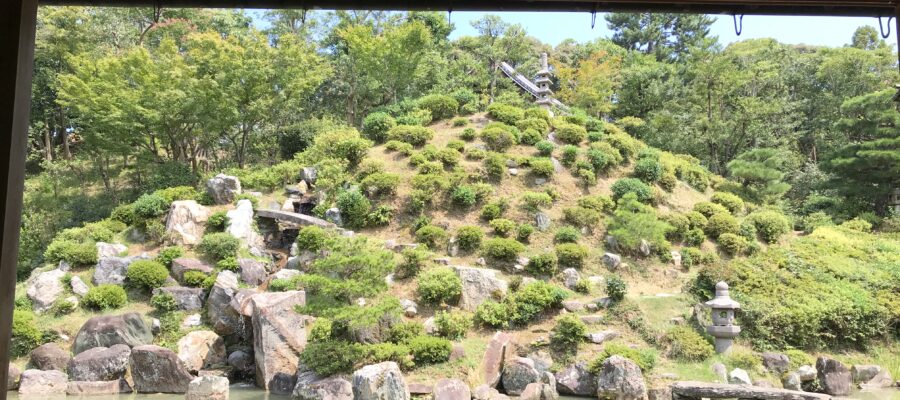国宝の障壁画
京都国立博物館の企画展に行くに際し、どこか近くのお寺でも行こうかと、今回は智積院を訪問することにしました。ここには桃山時代に全盛であった狩野派に対抗し、独自の画風を確立した長谷川等伯の一派によって描かれた国宝の障壁画があります。
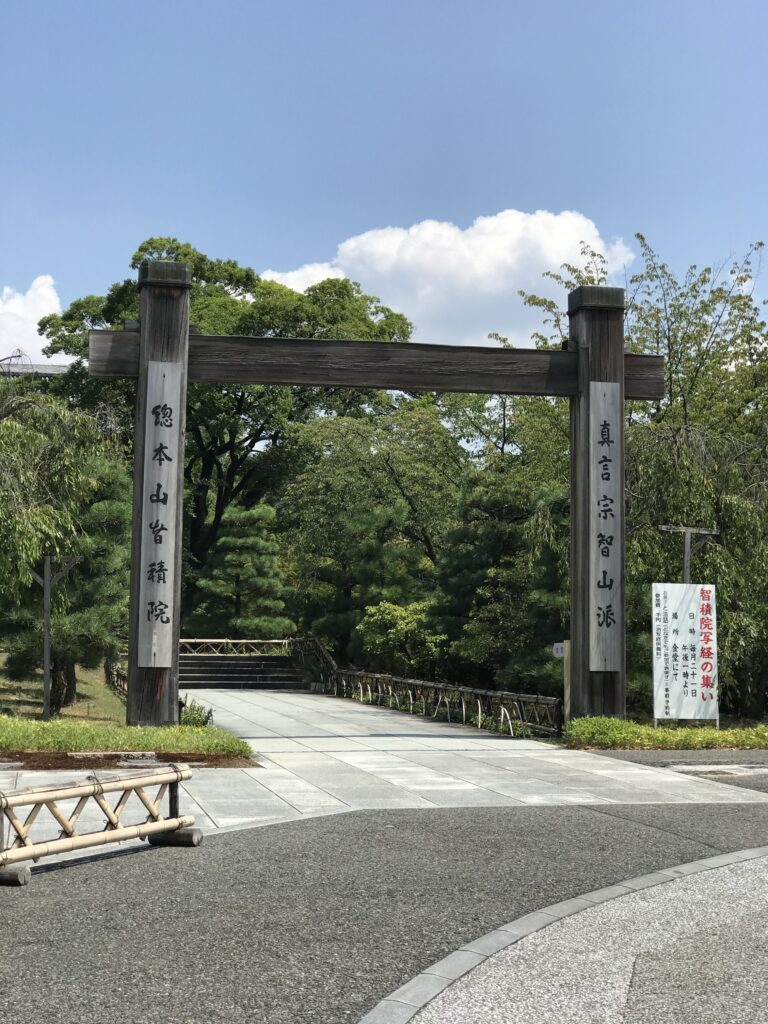
名勝庭園
撮影禁止の障壁画を見た後、すぐ隣の名勝庭園に入りました。門をくぐってすぐに高浜虚子の句碑が建っています。そこから建物を回るように奥に向かっていきます。予習なしで来ましたので、どんな庭なのか全く想像がつきませんでした。
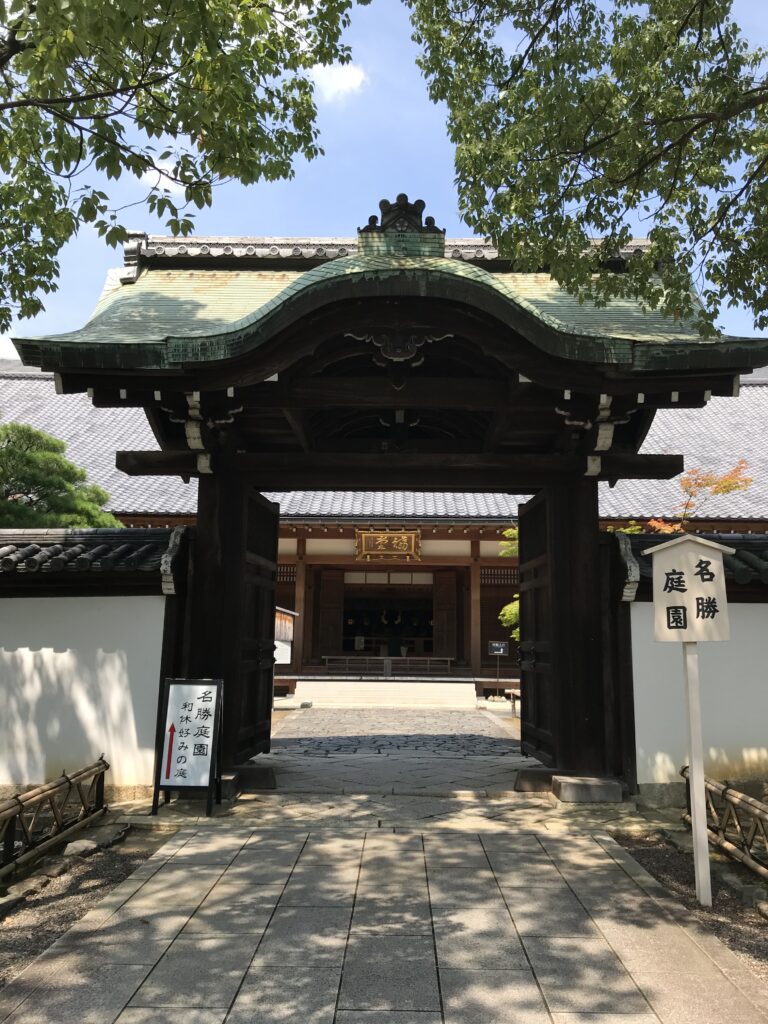
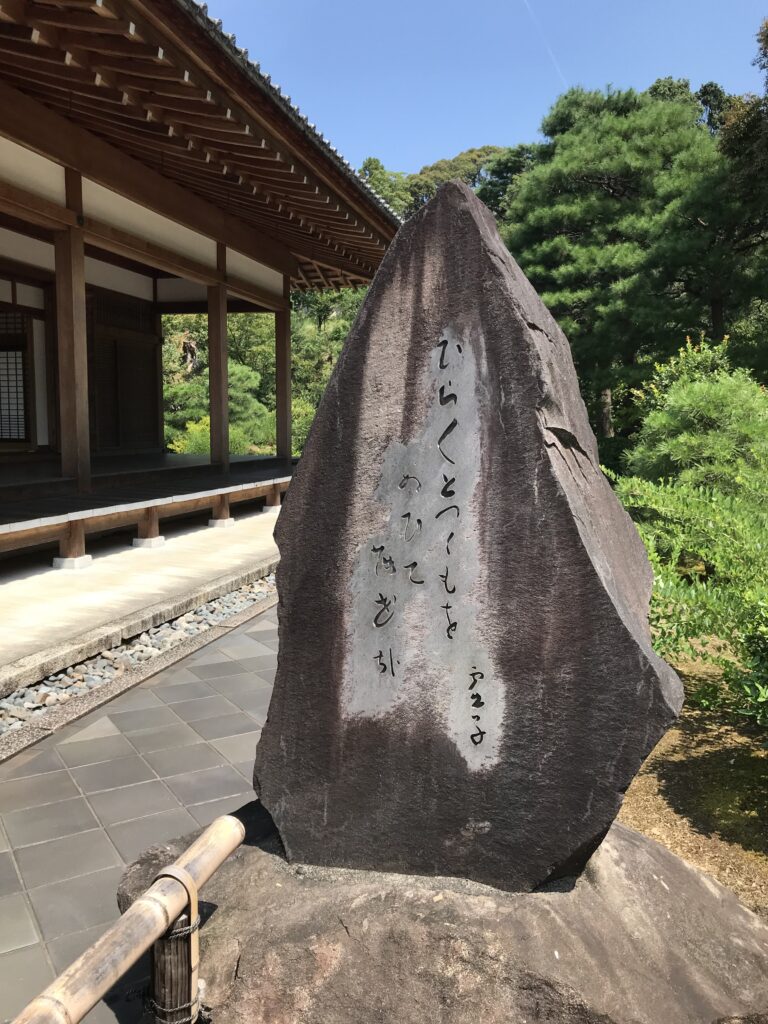
建物の角を曲がると、少し赤みのある土の地肌が見えた築山が奥に見えてきました。どんどん奥に進むと、石や刈込が目立ってきます。この庭は利休好みの庭と伝えられ、中国の廬山を模って造られているそうです。後で廬山の画像を見ると、なんとなくイメージが合いました。
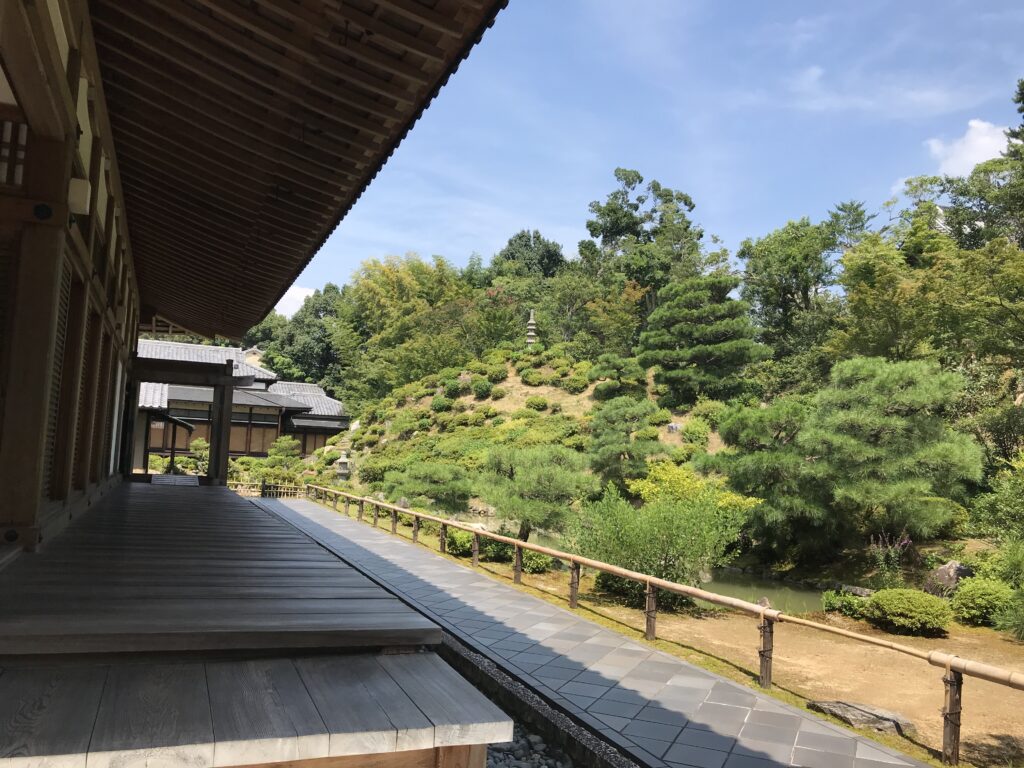
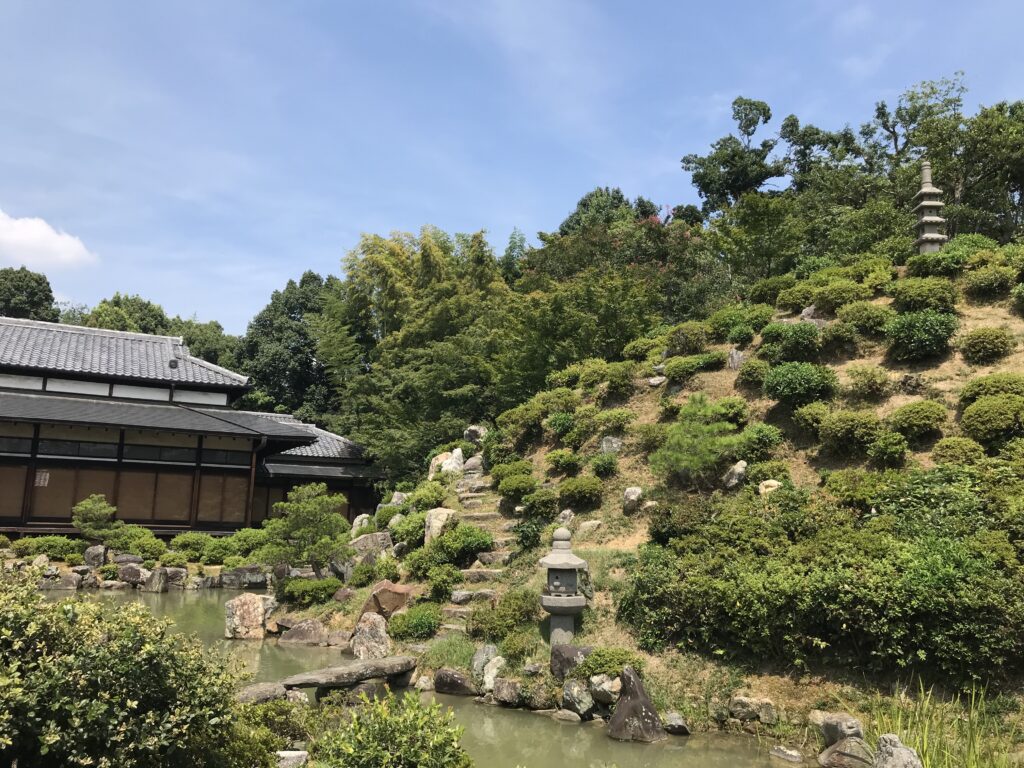
雄大な景色の庭園
庭の正面まで来て眺めますと、石組の中、滝が流れています。この正面は江戸時代に修築されたもので、石と植え込みが交互に並んでいます。また、右側の石橋の方に目を転じると、奥行き深く雄大な景色を見せてくれます。
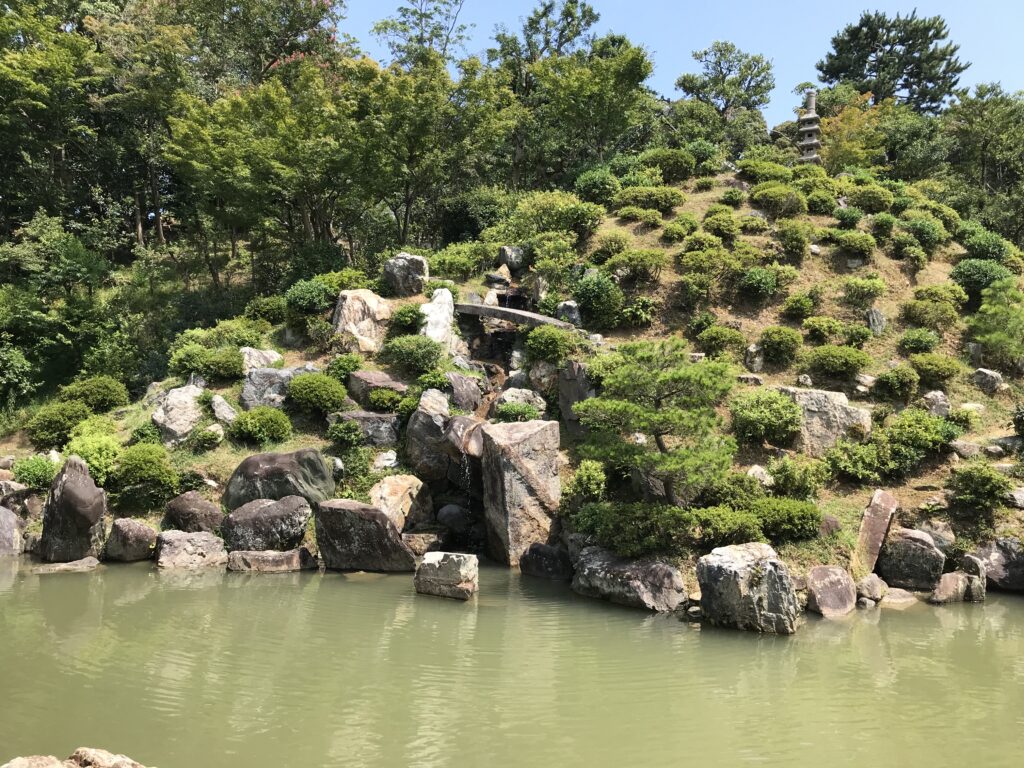
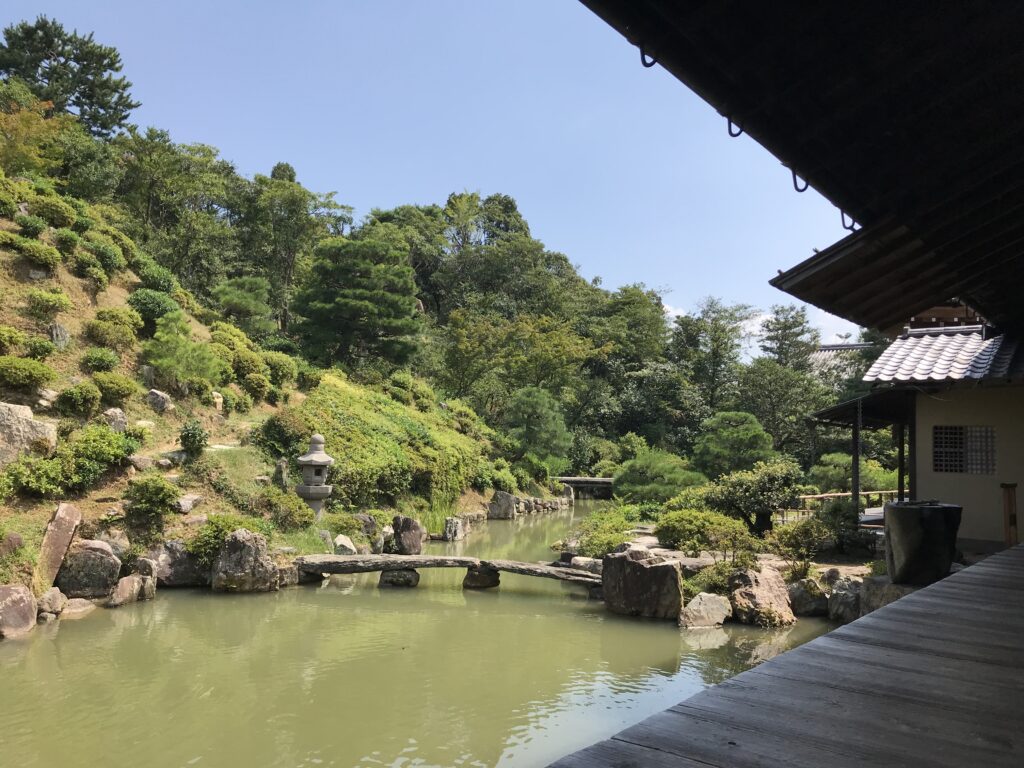
土の地面が多く見えていたこともあり、むき出しの石が更に野性味を出しているように感じました。京都の庭園は、どちらかというと細やかさを感じることが多いのですが、ここは力強さを感じる庭です。建物の中からも眺めてみましたが、見ているだけでパワーをいただける、そんな感じがする庭園でした。(完)
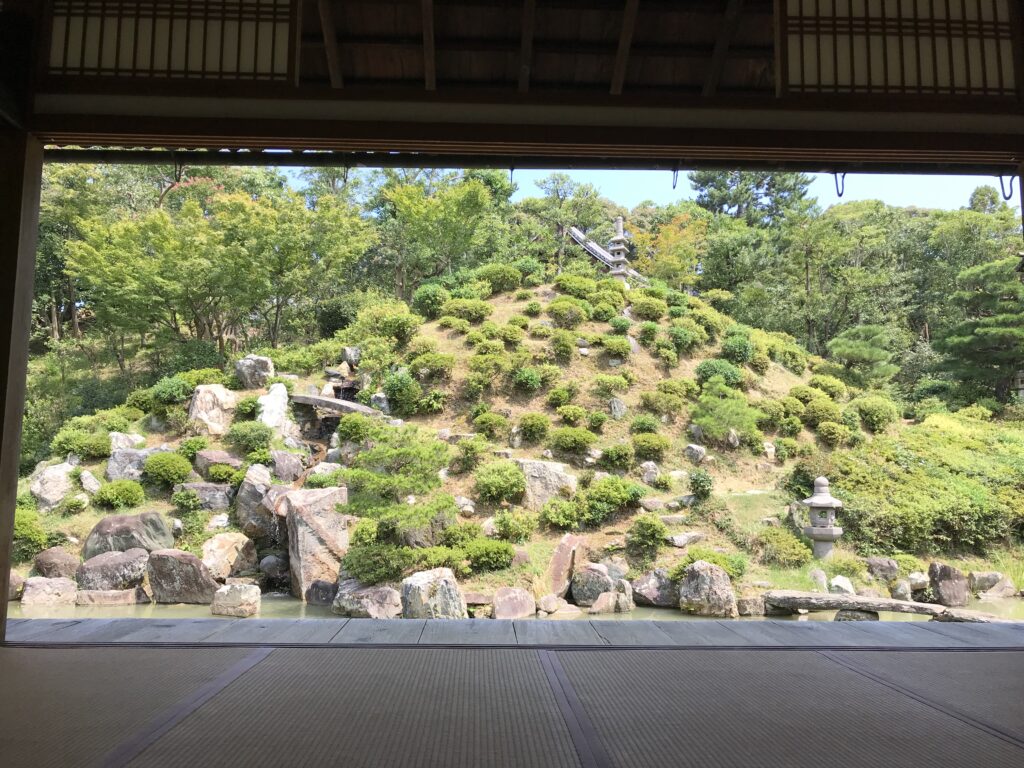
智積院の御朱印
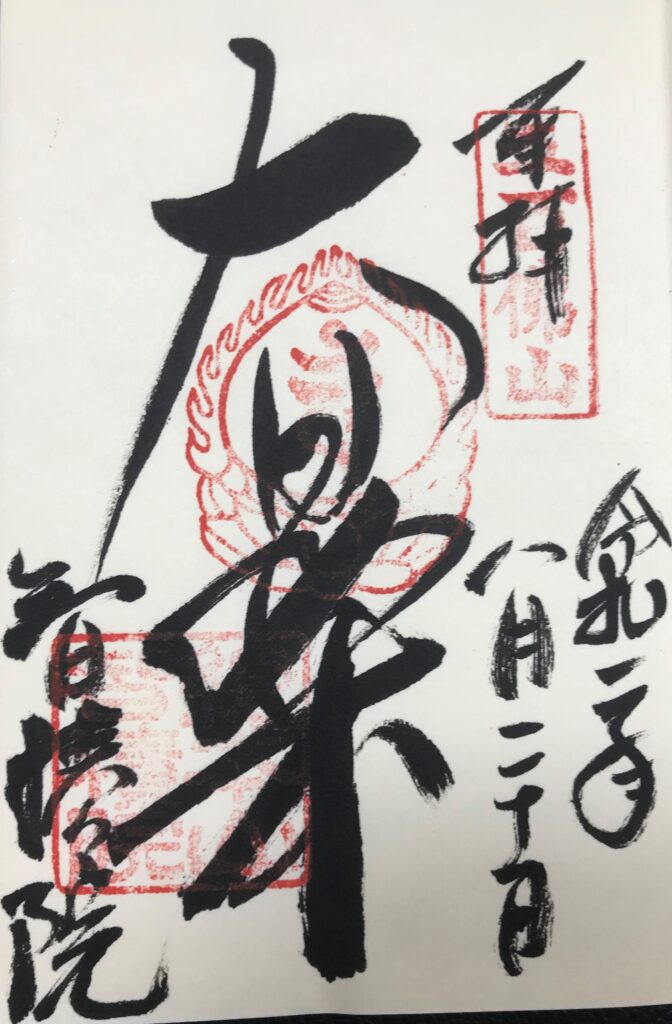
Chishakuin Temple (English)
Sliding Door Paintings of National Treasures
I decided to visit Chishakuin Temple when I went to Kyoto to see a special exhibition at Kyoto National Museum. The temple is home to a national treasure, the sliding paper door paintings of Hasegawa Tohaku, who established his own style of painting against the Kano school that was at its peak in the Momoyama period.
Picturesque scenery of a garden
After seeing the sliding paper door paintings, which were not allowed to be photographed, I entered the scenic garden right next door. Immediately after passing through the gate, there was a monument to the poet Takahama Kyoshi. From there, I walked around the building towards the back. I had no idea what kind of garden it would be like since I came here without any preparation.
As I turned the corner of the building, I could see a built-up area with a slightly reddish soil surface in the back. As I proceeded further and further into the garden, the stones and trimmings became more and more conspicuous. This garden was said to be Rikyu’s (Sen-no-Rikyu: Tea Master of Momoyama Period) favorite garden and was built in the style of Lo Mountain in China. When I looked at the image of Lo Mountain later, I was able to match the image.
Gardens with magnificent views
When I came to the front of the garden, I saw a waterfall flowing through the masonry. The front of the garden was reconstructed in the Edo period (1603-1868), with alternating rows of stones and plants. If you look towards the stone bridge on the right, you will see a deep and magnificent view.
There was a lot of earthy ground visible, and the bare stones seemed to give it an even more wild look. The gardens in Kyoto tend to be rather detailed, but this garden gave me a sense of power. I looked at the garden from the inside of the building, and it gave me a feeling of power just by looking at it. (End)
Temple Chishakuin (Français)
Portes coulissantes en papier Peintures de trésors nationaux
J’ai décidé de visiter le temple Chishakuin lorsque je suis allée à Kyoto pour voir une exposition spéciale au musée national de Kyoto. Le temple abrite un trésor national, les peintures de portes en papier coulissantes de Hasegawa Tohaku, qui a établi son propre style de peinture contre l’école Kano qui était à son apogée à l’époque Momoyama.
Scène pittoresque d’un jardin
Après avoir vu les peintures des portes en papier coulissantes, qu’il était interdit de photographier, je suis entré dans le jardin panoramique situé juste à côté. Immédiatement après avoir franchi la porte, il y avait un monument au poète Takahama Kyoshi. De là, j’ai fait le tour du bâtiment vers l’arrière. Je n’avais aucune idée du genre de jardin auquel il ressemblerait puisque je suis venu ici sans aucune préparation.
En tournant l’angle du bâtiment, j’ai pu voir une zone bâtie avec une surface de sol légèrement rougeâtre à l’arrière. Au fur et à mesure que j’avançais dans le jardin, les pierres et les bordures devenaient de plus en plus visibles. On dit que ce jardin est le jardin préféré de Rikyu (Sen-no-Rikyu : maître de thé de la période Momoyama) et qu’il a été construit dans le style de la montagne Lo en Chine. Lorsque j’ai regardé l’image de la montagne Lo plus tard, j’ai été capable de correspondre à l’image.
Jardins avec vues magnifiques
Lorsque je suis arrivé à l’avant du jardin, j’ai vu une cascade qui coulait à travers la maçonnerie. L’avant du jardin a été reconstruit à l’époque Edo (1603-1868), avec des rangées alternées de pierres et de plantes. Si vous regardez vers le pont de pierre sur la droite, vous verrez une vue profonde et magnifique.
Il y avait beaucoup de terre visible, et les pierres nues semblaient lui donner un aspect encore plus sauvage. Les jardins de Kyoto ont tendance à être plutôt détaillés, mais ce jardin m’a donné un sentiment de puissance. J’ai regardé le jardin depuis l’intérieur du bâtiment, et il m’a donné un sentiment de puissance rien qu’en le regardant. (Fin)
